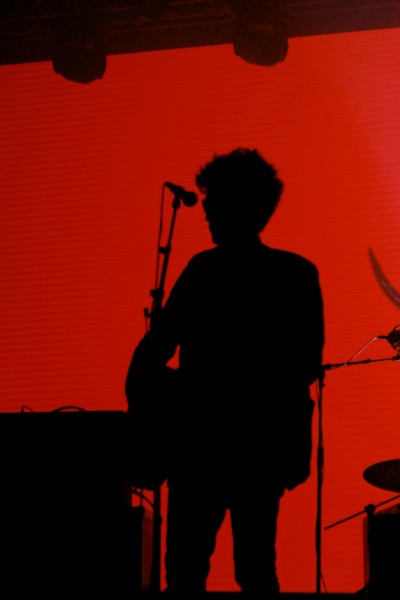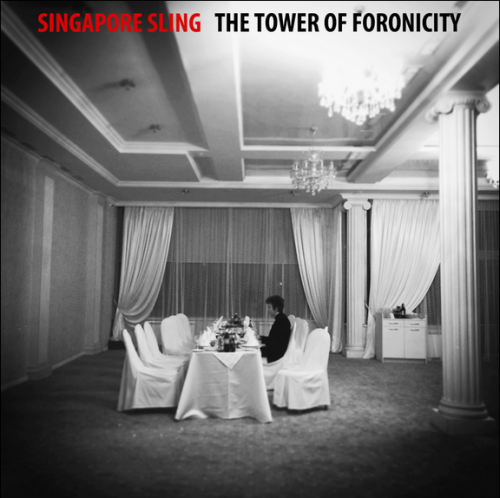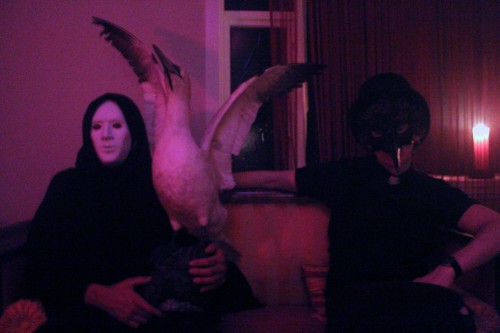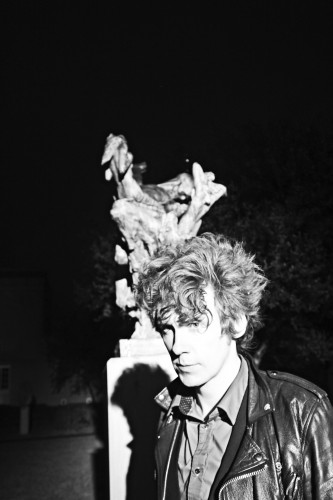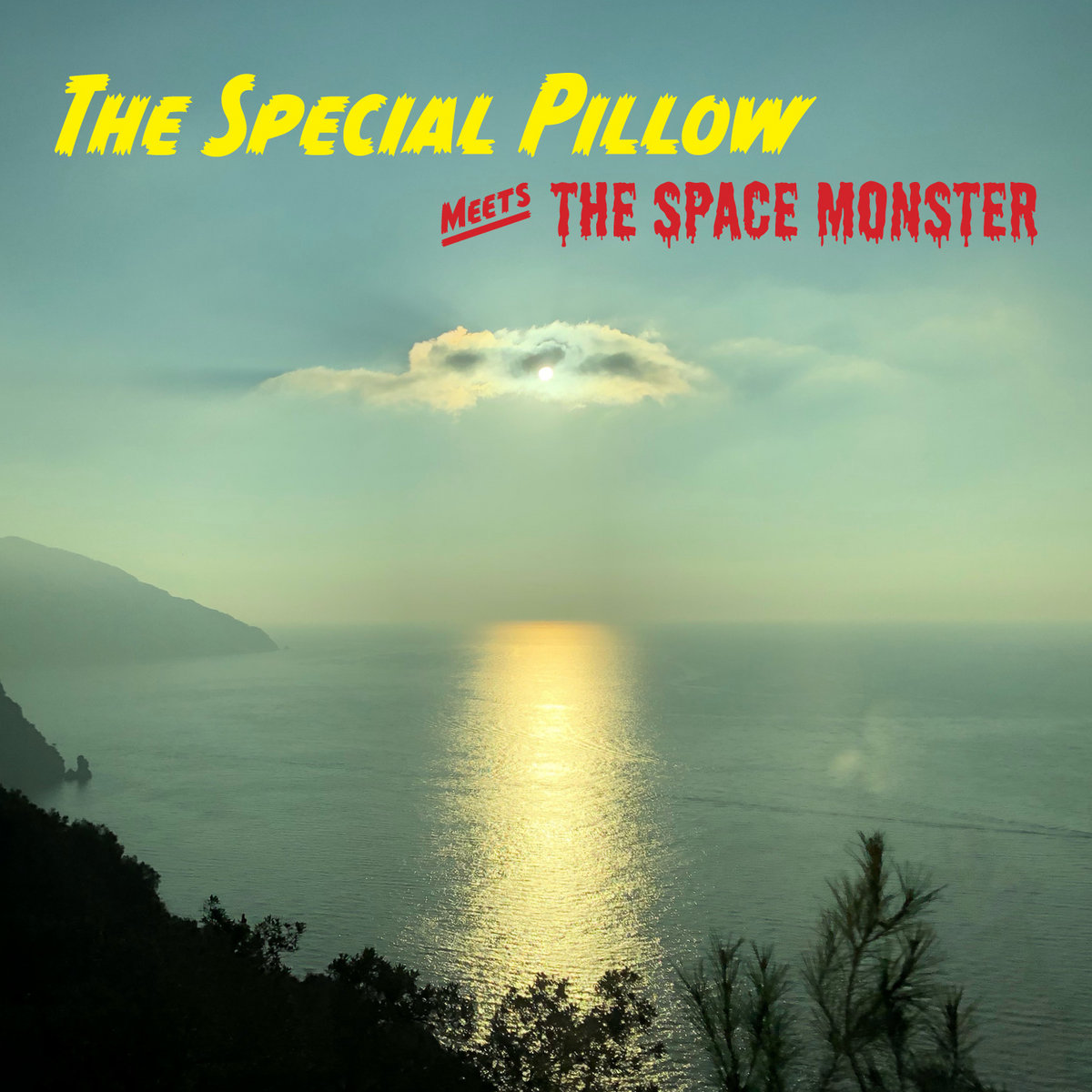Written by: Paul Gleason
As the prime force behind Iceland’s Singapore Sling, Henrik Björnsson has created some of the most compelling psych rock of the past 15 years. With his creativity just as reliable as it is relentless and boundless, Björnsson has consistently made music that revolves around, as he puts it, his “love of the rock & roll of the past, and hatred for the majority of music around [him].”
It’s this combination of love and hate that defines Singapore Sling’s triumphant 2014 album, The Tower of Foroncity. The album bathes you in musical references to The Jesus and Mary Chain, Suicide, late 50s’ and early 60s’ rock & roll, country music…the list is seemingly endless. And, in doing so, it offers you a listening experience unlike anything you’ve had before.
Not only is Foroncity one of the best albums of last year, but its strange genre amalgamations are the stuff of pure psychedelia in its original Greek definition of “mind-revealing” – challenging you to rethink what you thought you knew about genre and imagination.
Indeed, Björnsson wants to challenge you, entertain you, and give you a true psychedelic experience – and Singapore Sling accomplish this to no end.
Enjoy our interview with Björnsson.
SEM: You’ve said that Singapore Sling “was born out of love and hate: love of the rock & roll from the past, and hatred for the majority of the music around me.” Would you please elaborate on this statement?
HB: Well, if I had loved all the music around me and everybody had been doing what I wanted to do, I probably wouldn’t have felt the need to do it myself. Seeing and hearing garbage made me want to do the opposite.
SEM: What were the advantages and disadvantages of recording The Tower of Foroncity in your home studio?
HB: I wouldn’t call it a “home studio.” It’s just a recording device and a few instruments. Well, the disadvantages were that I don’t have a drum kit at home and I couldn’t make noise whenever I wanted to. I did, however, have a piano, which was an advantage. And I didn’t need to leave the house, so I could be efficient from when I got up to when I went to bed.
SEM: “Foroncity” is a made-up word that means both “ridiculousness” and “adversity.” What did you mean when you said, “Foroncity levels have been extremely high this year”?
HB: I meant that there was an endless amount of garbage to deal with. It was just absurd. Just foronic.
SEM: Are there specific examples of “Foroncity” of which we should be aware?
HB: When things are so ridiculously bad that you think they couldn´t possibly get worse. But they do get worse and you start thinking, “If things can actually get worse than this it will be interesting to find out.” In the end, it just makes you laugh. That’s an example of foronicity.
SEM: What specific tracks on The Tower of Foroncity refer to “Feroncity”?
HB: Quite a few. “Absolute Garbage,” “You Drive Me Insane,” “Tired,” “Nuthin’s Real”…well, most of them in fact.
SEM: Let’s talk about some specific tracks on the record. How do you achieve the vocal effect on “All Your Sins”?
HB: I sung it very deep and low for maximum perverse effect.
SEM: You write about very dark subject matter on “All Your Sins.” Would you describe the subject matter and tell us why you chose to write the song in the first-person?
HB: Describe the subject matter? Well it’s sick and perverse, but to me it was just a funny thing to sing about in a song, that´s all. Didn’t it make you laugh?
SEM: The keyboards give a very distinct sound to “In with the Out.” What was the keyboard setup?
HB: I just used a midi keyboard in that song.
SEM: How does a song like “Let’s Go” contribute to the fuzzed-out, dark, surf rock tradition of groups such as The Jesus and Mary Chain?
HB: You tell me.
SEM: What inspired the cool guitar solo-keyboard outro on “Careful (I’m Evil)”?
HB: Buzzing flies and horror rock.
SEM: Why did you use what sounds like a female voice on “Absolute Garbage”?
HB: Cause I had my sister over and I like her voice.
SEM: How does the use of this voice affect the song’s meaning?
HB: It doesn’t. It just sounds good.
SEM: What past musical style do you work in on the song?
HB: No style in particular. I guess it does sound a bit like something from the 50s or the 60s, but I´m not sure what.
SEM: The vocal melody of “Who Put the Ebb in the Ebbebebb” has a country music feel. Why did you go in this direction on the eighth track of 12-track album?
HB: Yeah, I guess it’s got a bit of a Lee Hazlewood or Hank Williams feel. It´s actually a song that was written and recorded many years ago but got lost. Then when it was found last year I decided to sing it again and put it on this record. I didn´t know it when I wrote it, but it was made to be track number eight on this record.
SEM: Would you please discuss the arrangement of “Tired”? To me, it’s the most complex and satisfying track on the record.
HB: That’s a song I wrote about twenty years ago. I just remembered the song last year and how much I still liked it and related to the lyrics. So I recorded it again and kept it very close to the original arrangement I did of the song when I wrote it, but I added the keyboards and the guitar feedback, which almost sound like stings to me. I wanted the song to glide along lazily, which it does with this arrangement.
SEM: How do you compare your studio sound to your live sound?
HB: It’s different. I always record mostly by myself, and when playing live, we are a four to six piece band. When we play live, we don’t always do things exactly the same as they are on the recordings. That wouldn’t really be possible, and trying to do that would be pointless.
SEM: What’s your upcoming tour schedule like?
HB: We’re touring Europe in March. That´s all that’s planned. I hope we can play in America as well this year.
SEM kindly thanks Heiða Jónsdóttir for the rights to use the photographs of Singapore Sling.






